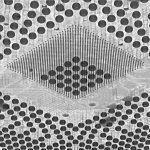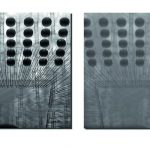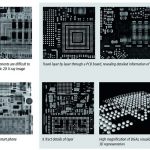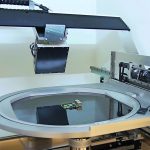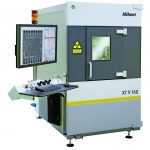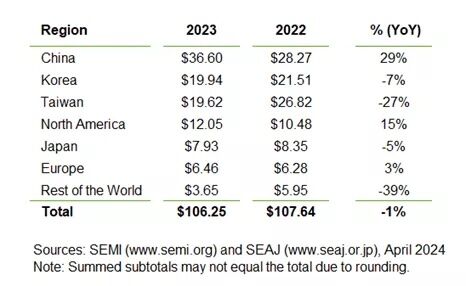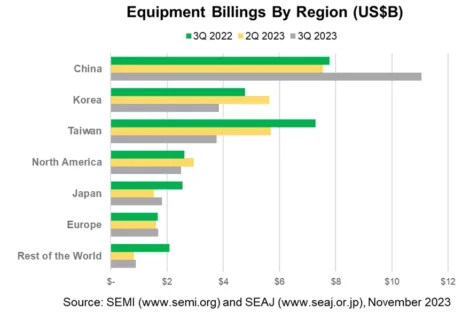X-ray inspection has played an important role in the quality and reliability of automotive manufacture for decades, as well as assisting in the drive to reduce cycle time and costs, whilst still maintaining product safety. Here, we explain why X-ray equipment is an even more vital tool in the car industry today, and how Nikon has made it even more accessible.
Kamran Iqbal, Nikon Metrology UK
Competition is fiercer than ever in the automotive sector, and when it comes to customer retention and increasing market share building confidence in the quality, reliability and safety of an automobile is paramount. Yet a reputation built up over years can be destroyed in a single media headline reporting on a serious product error, probably sending shock-waves around the globe in extremely short time.
So, how can manufacturers protect themselves? One way to guard against faulty parts is to invest in sophisticated equipment that will assist you in highlighting them. But, what every company has to justify first is the period of time it is deemed for the investment to rationalize itself? Yet, in automotive manufacture, the answer to that can be about far more than money alone is concerned with.
Benefits of X-ray inspection outweigh the cost
The ability of X-ray equipment to penetrate most engineering materials of varying size and density enables the operator to find otherwise unseen issues. This is the holy grail in their quest for quality assurance, product traceability and improved reliability – which in turn will reduce liability. In simple terms, an X-ray machine scan can reduce the need for in-line scrutiny equipment by providing a single, final quality inspection at the end of the process.
Whether a company supply parts to the automotive sector, or they are the actual vehicle manufacturer, they still face the same challenges of continuously having to monitor the quality of their processes. From complex micro-electronic components used in the increasing amount of on-board devices, through too much larger complex metal castings such as the engine block or vehicle chassis.
Parts manufactured from a solid metal structure may be impossible to reliably inspect any other way than by using X-ray. A unit that can be taken apart for inspection may be considered compromised if tampered with. Checking for faulty or counterfeit components is impossible if they arrive packaged and rendered non-returnable if opened. The vehicle chassis itself poses several issues which will affect the stringent tolerances dictated by the sector.
X-ray technology is overcoming all of these issues, providing stunning image sharpness through a variety product density or packaging. Making light work of fault detection at a point when the consequences can still be avoided, rather than further down the line. Far down the line can be too late in the automotive field, not only in terms of costly recalls, damaged reputations or the affect on customer and investor confidence – but as a result of injury or, even still worse, a death. Taking these issues alone into account, X-ray equipment has been able to adequately build its case in the automotive manufacturing arena.
Seeing is believing
Vehicle retailers set aside vast sums of money in the event of when, not if, they face a product recall. In fact, recalls are viewed as reasonably commonplace, with companies whose sole existence is based on their inevitability. The cost of which is of course passed on to us, the car buyer.
The use of X-ray inspection, at each level of vehicle parts manufacture, would dramatically reduce the issues which result in potential recalls, while at the same time protecting each of the manufacturers in the supply chain against liability. Not only can they factor in a greater level of product quality, they can also supply full product inspection data and therefore tight verification of their process.
The ability to see where a process may be going wrong, also provides an opportunity to identify areas that can be improved upon and even reduce manufacturing costs. X-ray equipment is also being used for reverse engineering, to enable product development and improvement by learning from what is already out there.
It is clear that access to X-ray equipment needs to be made available at all levels of the process, and to all types and size of manufacturer. Nikon Metrology provides attractive options for the investment in X-ray equipment, as well as making available the use of their X-ray bureau service. The company has also set a new standard in the technology, which reduces consumable replacement costs considerably, as well as reducing the cost of downtime.
Buy or borrow?
There are many important components that make up a Nikon X-ray system, including the lead shielded cabinets which offer industry leading safety. Part of the success of the company has been in providing a flexible approach, producing modular systems which can be upgraded to grow with the customer. This ongoing relationship means the customer can trust the solution when it comes to future machine investment decisions.
Nikon Metrology’s business is split between those automotive industry manufacturers who run their own X-ray inspection – and those who have either chosen not to operate an in-house system or have not yet reached that point but still wish to provide quality assurance in this arena. They are able to achieve this is by exploiting our cost-effective X-ray inspection bureau service.
Nikon work with large manufacturers, where X-ray is an everyday part of the process, through to those companies who have never used X-ray before. The bureau service enables them to work closely with us, building lasting relationships that ensure they achieve the level of customer satisfaction and trust that will see their quality assurance efforts in optimum condition. We provide access to their fully trained inspection engineers, who are using the latest X-ray equipment and technology from small, batch inspections right through to a fully automated process. An X-ray bureau customer may well work with Nikon as they build their business, right through to the need to purchase their own X-ray machine.
Open tube technology
Although downtime is a dirty word, it cannot be avoided entirely. Finding solutions to manage downtime is where today’s smart money is spent. Nikon has incorporated a unique open tube vacuum system in their machines which houses the filament that emits the X-ray radiance. The clarity of the image is of course of vital importance, and means the filament must be changed when it can no longer provide the optimum results.
With unique open tube technology, a filament can be removed, simply and easily by the manufacturers own operator, taking approximately twenty minutes depending on the size of the system. And, it can be carried out at a time which best suits their shift pattern. It also has minimal cost implications, and can be ordered and kept on the shelf until required. This offers a far superior solution to the usual closed-tube vacuum system, where an engineer must be called to remove the component. It is then taken away for anything up to a few weeks – and at significant cost. During which time the machine is generally rendered out of action.
Nikon consider this an unacceptable and outdated burden for any manufacturing process. Although the open tube option may not last quite as long per filament, but taking into account the lost time and costs it stacks up extremely favorably against the alternative. Open tubes providing an unlimited lifetime system opposed to closed tubes which need to go back to the factory. In fact, once the open tube technology is explained, and the customer understands the risks and costs, the user usually chooses this solution.
Waste reduction
Vehicle manufactures are increasingly under pressure to reduce energy consumption and carbon footprint, and to meet ever evolving legislation created by governments around the world to dictate reduced emissions and the reduction of waste. This minimization is not only good news for the planet’s depleting resources, it is also good news for the manufacturer. Less waste, or better management of waste, is proven to reduce a company’s costs significantly.
Manufacturing processes, across many different sectors, have applied the same thinking when it comes to checking for faults and the quality of the products. Basically, dismantling a number of items on the production line, periodically, to ensure quality and accuracy. Items tested, very often result in waste as the parts are often dismantled and then discarded. By helping manufacturers identify where the process is going wrong, is where X-ray equipment is playing its role in the reduction of manufacturing waste.
Fuel efficiency
EU legislation sets emission reduction targets for new cars, with existing vehicles responsible for approximately 12 % of the total CO2 emissions. To improve this issue, you need to look at engine efficiency and vehicle weight in order to reduce fuel consumption. The weight of a vehicle stands for about one-third of its total fuel consumption, and vehicle manufacturers have been forced down the road of looking at new materials to achieve these goals.
The area where significant weight reduction can be achieved is by creating a smaller engine block and the associated parts, and by changing the materials used to produce them. However, smaller and lighter, combined with new materials has raised all kinds of problems as a result of the new processes which can involve the layering of metals or a combination of varying alloys. The only way to see inside is by using X-ray. And issues such as thinner engine walls, poor surface properties, distortion and any kind of subtle variation will provide the potential for unseen faults.
A vehicles weight is of course the sum of all its components, so across the entire supply chain manufacturers have had to look at new, untried and untested materials, while at the same time avoiding higher manufacturing costs. In such a quality, price sensitive and safety driven marketplace, this has created a whole new dimension of uncertainty which X-ray equipment is increasingly being called upon to solve.
What next for X-ray in the automotive sector?
We will encounter a radical shift in the next few years. In many cases the future is already here, with electric and hybrid vehicles becoming more popular, and hydrogen could be potentially around the corner. You can borrow an Eco vehicle with the simple use of a key card, and the driver-less car is already here – with all the implications of a supporting infrastructure. The increasing use of drone technology could take us anywhere in the field of product delivery for example – not to mention 3D printing car body parts or even engines.
Following smart phones will probably come smart roads and a greater need to be entertained if we are not physically at the wheel. In France the first solar roads are already being laid and the driver-less car is already more than just a myth. Vehicles will talk to each other, sense each other and work together. And yet, with any advancement in technology, comes the same customer demand and assurance of compliance and quality from their supplier. With all the knowledge we have made it our job to research there is still no point on the horizon, or beyond, where we see the need for automotive quality and safety not going hand in hand with X-ray technology.
Needless to say, the condition to react to market change and time to market will become much faster. The future may be radical, exciting even, but one thing remains constant in an ever changing landscape, the need to ensure the quality, reliability and safety of the process.
Share:


